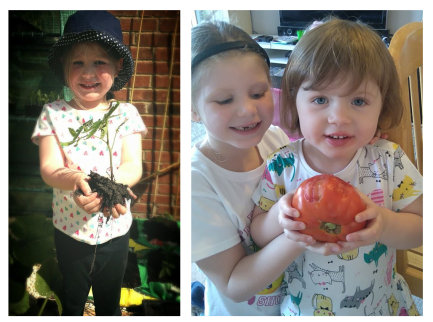11-15 June is Healthy Eating Week, which aims to help nurseries, schools, universities and workplaces to encourage healthy eating, drinking, and physical activity. But what is healthy eating and drinking? As a nutrition scientist, this is a question I am often asked by friends, family and colleagues, and it is a great pleasure that my research field generates such engagement potential! We all have to eat, after all… For many of us our food choices also impact others, such as the decisions we make when preparing meals for children.

An unfortunate side of working in nutrition is that you don’t have to spend too long browsing #nutrition tweets before you will stumble across some spectacular #nutribollocks. I remember being on holiday in the USA and watching with open-mouthed horror as a nutritionist on breakfast TV recommended a microwave pizza as a suitable breakfast option for those in a hurry. I urge everyone to check the qualifications and motivations of those offering nutrition advice. A good place to start is to check whether they are a Registered Nutritionist (as I am proud to be) or Dietician.
Knowledge about healthy foods is the foundation of making healthy choices
I believe that knowledge about healthy foods is the foundation of making healthy choices, yet even I won’t claim to be 100% righteous at all times. I enjoy the taste of sweet, salty and fatty foods, and something which combines all three is especially hard to resist (salted caramel brownie anyone?). Nutrition provides a unique opportunity to combine scientific knowledge with creative flair or the social sciences – I think this is what makes nutrition such a complex and fascinating subject. For example, there are scientific mechanisms and supporting research evidence to explain how early life nutrient exposures induce epigenetic effects which influence our later food preferences. Yet layered on top of this are the complex mix of emotional, cultural and economic factors determining our favourite foods and those we reach for when we need comfort.
Successfully applying the science of nutrition means that laboratory scientists like me must also be able to engage with the technical skill and art of growing, preparing and cooking food. For example, I don’t map out how I will consume my daily recommended 45g of protein and 1.2mg of vitamin B6, because I eat foods, not just a shopping list of nutrients. I also know that the pleasure I get from eating foods I have grown with my children or that I have enjoyed as part of a celebration with friends and family is much more than the simple sum of the nutrients they contain.
We must keep a critical eye on whether the messages we receive about food choices are truly based on evidence, or whether they are influenced by other factors such as a desire to launch a new eating trend or book for financial gain

For truly ‘healthy’ eating, we must also keep in mind the wider social and environmental impacts of the choices we select for ourselves or encourage in others. Nutrition science indicates that there are health benefits of eating oily fish, but I can’t ignore the fact that the vast majority of people in the UK never eat any oily fish, nor that household finances and local availability of products can be significant barriers. Equally there are environmental impacts arising from the international transport of foods and potential sustainability issues should fishing practices not be monitored or controlled.
What to eat to be healthy? Well, the often frustrating answer is – it depends. Here in the Institute of Developmental Sciences we investigate health across the lifecourse. Nutrition requirements vary depending upon our sex, age and background health, and as a result the ‘healthiest’ eating patterns vary between individuals. Is white bread or brown bread better? The answer will be different for a toddler who needs to optimise mineral absorption compared to a retiree who wishes to boost their fibre intake for bowel health. Is organic milk a better choice for my child? The higher price tag may confer a suggestion of premium quality synonymous with healthiness, yet nutrition scientists know that organic milk is lower in iodine than conventionally farmed milk.
In Healthy Eating Week the British Nutrition Foundation encourages us to take on 5 challenges – with optional Super Challenges for the competitive among us.

The good news is, that despite what some cookbooks or diet fads may suggest, healthy eating doesn’t have to mean a diet of expensive, hard to find and difficult to prepare ingredients. While fresh asparagus and blueberries are a lovely treat for those who can afford them, they are not necessarily ‘healthier’ than frozen peas or canned fruit in juice. We must keep a critical eye on whether the messages we receive about food choices are truly based on evidence, or whether they are influenced by other factors such as a desire to launch a new eating trend or book for financial gain.
Just please don’t ask me for advice on how to get active – my sole exercise of the day is all too often the short walk from car to office! Why not look to some of our outstanding Institute of Developmental Sciences alumni for evidence-based inspiration? @DrAliHill, a Sports Nutritionist at Solent University who manages to fit 10k races into her work-life balance while dishing out scientifically sound advice to athletes and students, such as her recent article on smoothies. Or Dr Amy Lomax, now a registered Dietician with an inspiring blog describing her habit of running marathons and epic 100 mile ultra-marathons!
For Healthy Eating Week I’ll be setting myself a challenge to include veg in my packed lunch every day. Why not see what you can achieve? For more tips and information on how you can challenge yourself during Healthy Eating Week take a look at @BNFEvents or @Foodafactoflife.
